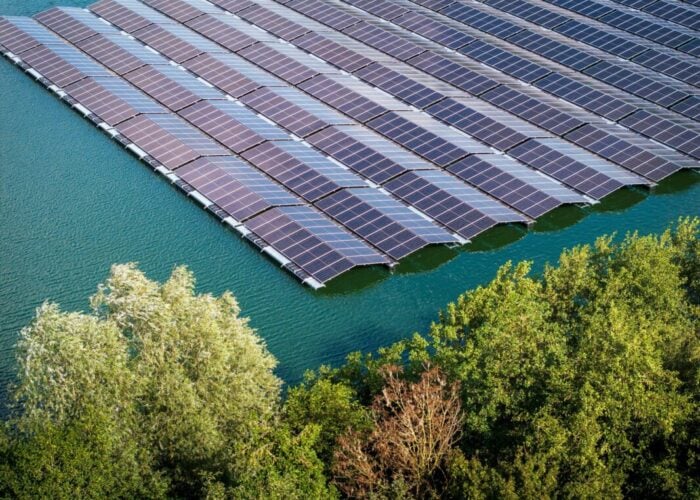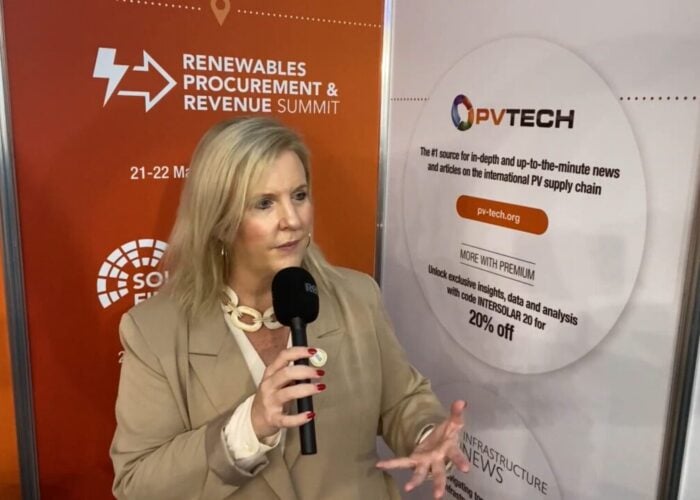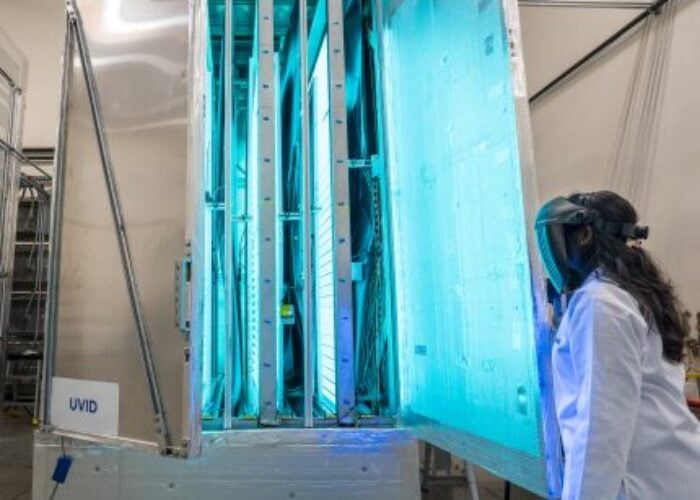Taiwan-based BIG SUN Energy Technology says it is making meaningful inroads into the competitive PV tracker systems market despite its focus on dual-axis trackers rather than the dominant single-axis systems.
BIG SUN is better known for being a specialist producer of both typically high-efficiency monocrystalline and multicrystalline solar cells. However, its subsidiary Topper Sun Energy has focused on re-engineering dual-axis trackers to the point where it claims the costs are almost comparable to the leading single-axis trackers.
Try Premium for just $1
- Full premium access for the first month at only $1
- Converts to an annual rate after 30 days unless cancelled
- Cancel anytime during the trial period
Premium Benefits
- Expert industry analysis and interviews
- Digital access to PV Tech Power journal
- Exclusive event discounts
Or get the full Premium subscription right away
Or continue reading this article for free
Recently, market research firm IHS reported the PV tracker systems market was growing strongly having reached around 4GW of installations in 2014, a 60% year-on-year growth rate.
The market is dominated by single-axis system producers such as Array Technologies, SunPower, First Solar and NEXTracker, especially since the exit of CPV dual-axis system producer Soitec from the market last year.
Recent order wins for BIG SUN’s subsidiary indicate dual-axis trackers should not be written off.
Topper Sun Energy has signed a memorandum of understanding with Switzerland-based global EPC firm Graess Solar for 100MW of PV project business deploying its innovative low-cost dual-axis system, ‘iPV Solar Tracker.’
The MOU follows on from the signing of an exclusive distribution deal for the iPV Solar Tracker in parts of Europe (Italy and Germany) with Taiwan-based wafer producer Sino-American Silicon Products (SAS), and majority owner of Aleo Solar.
BIG SUN Group chairman, Summer Luo, and president Fritz Cheng, provided PV Tech with further insight into the momentum gained by Topper Sun Energy’s patented technology at their headquarters in Hsinshu, Taiwan.
“Over the last three years BIG SUN Group has delivered over 1,500 sets of our tracker system to projects in Japan, China and Taiwan,” noted Cheng. “We are actively engaging in a number of pilot demonstration sites as well in countries such as Germany, Poland and USA.”
Cheng went on to highlight some of the core features of the dual-axis tracker, including a cable-drawn drive mechanism with a universal axis that allows full 360° degree rotation with a tilt angle range of 0° to 40° for precise and optimised sun angle at all latitudes.
A simplified drive mechanism, compared to conventional dual axis trackers, was touted to significantly reduce balance of system (BOS) costs as well as its astronomically controlled tracking. The cable-drawn twin drive mechanism connected to the four corners of the module mounting frame also provided movement for the array that reduced drive complexity and cost while doubling as anchors for the entire system in extreme weather conditions, a point Cheng highlighted as being advantageous in regions such as Taiwan and China that succumb to typhoons. The system has been testing in the field and can withstand wind speeds of 220kph, he said.
A standout aspect is the claimed energy yield from the dual-axis system, which was said to be in excess of 45%, compared to conventional fixed-tilt ground-mounted PV systems.
According to Cheng, data accumulation and analysis from its iPVSYS monitoring and control system from over 200 projects typically has shown energy yield improvements of between 30 to 40% when compared to fixed-mount systems. Typically single-axis systems have been touted to generate yields between 20 to 25% higher than fixed-mount systems.
Erh-Nan Chou, BIG SUN’s CTO went further in analysis of the data from projects, showing markedly steeper ramps in electricity generation from its dual-axis system, while producing around a four-hour peak plateau of electricity generation, while the ramp down in the daily generation cycle was slower than for fixed-mount systems.
A key benefit of the measured yield cycle was a significant reduction in the ‘duck curve’ characteristics of fixed-mount systems, which in grid operator terms is a major benefit when large amounts of PV are operating and feeding the grid.
Such abilities have not gone unnoticed by major PV project developers that have to manage, in tandem with grid operators, large quantities of narrow peaking plants.
“We are really just beginning in widening the market and developing new partnerships with demonstration sites in many parts of the world,” noted Cheng.
Very recently, BIG SUN has worked with China’s largest project developer and EPC TBEA on a 24-unit pilot plant next to a conventional 100MW fixed-mount PV power plant to accurately measure the real world characteristics of its iPV Solar Tracker.
Although the dual-axis tracker has its roots in utility-scale projects, the iPV Solar Tracker system using a concrete base has been used on commercial flat roof projects as well, offering a much broader appeal.
The company highlighted that it had six commercial rooftop systems in operation in Japan all producing similar yields in percentage terms as the bigger ground mounted version.






